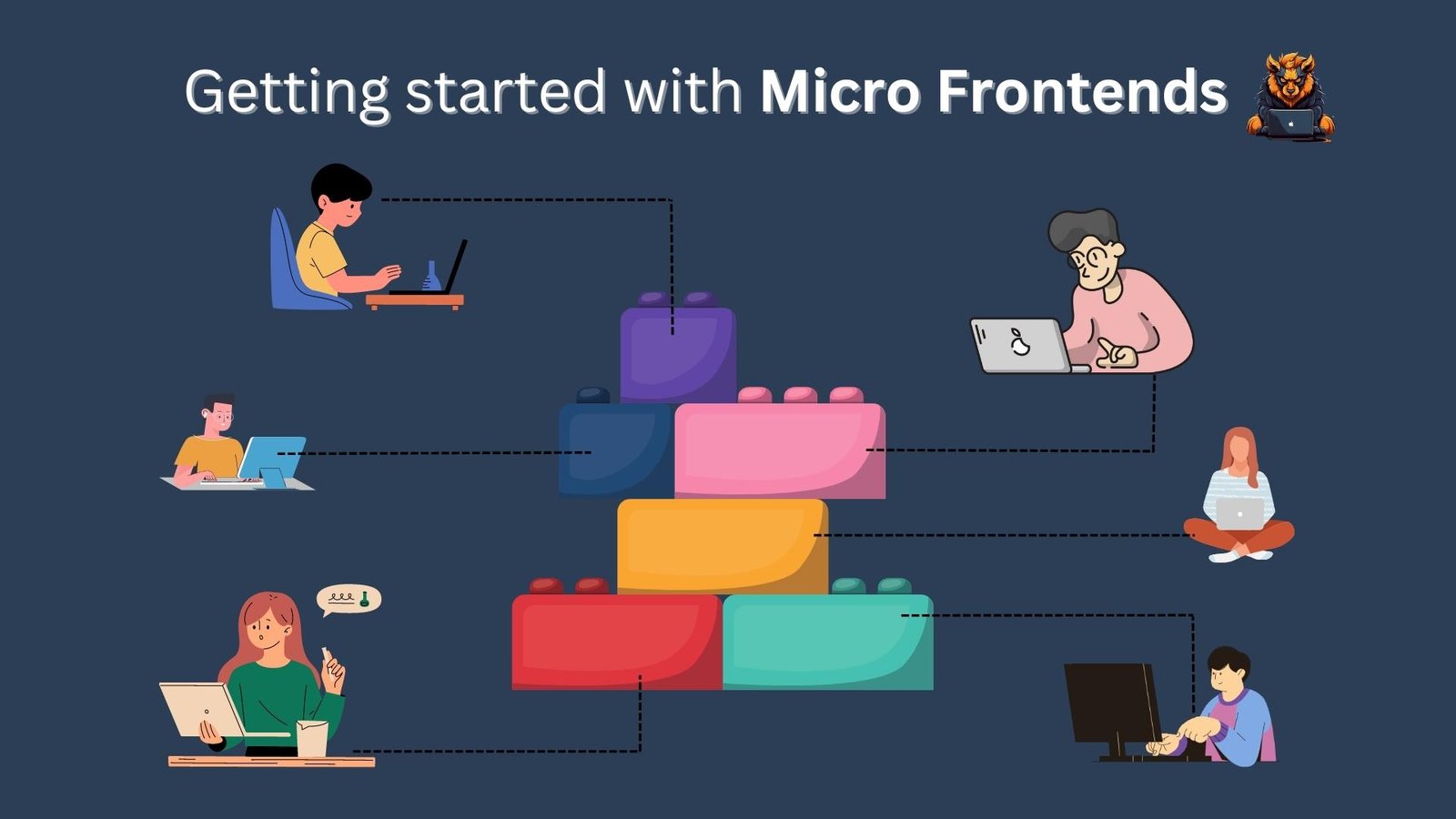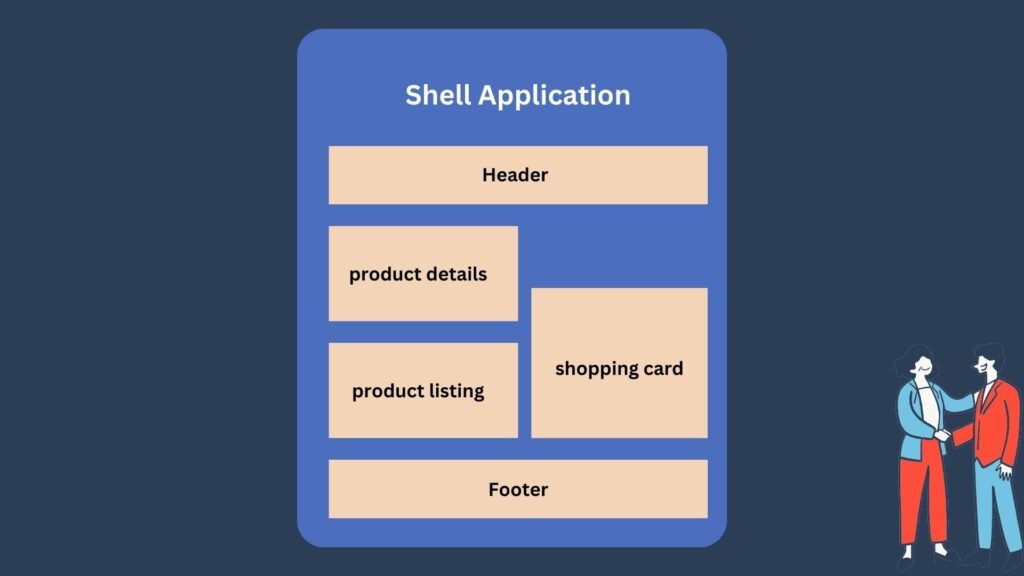Contents
What are Micro Frontends?
Micro frontends are small, semi-independent or independent parts of a front-end application. They allow developers to slice an application into smaller, logical units that can be developed, tested, and deployed independently while still providing a consistent user experience.
Before Micro Frontends
Before micro frontends, web applications were usually made with one big structure called monolithic architecture. In this setup, the whole application is created and put into action as one piece. That means all the different parts and features of the application are tightly connected and can’t be changed or updated separately.
While monolithic architectures are simple and easy to develop, they come with some problems. For instance, if you want to change or update one part of the application, it’s tough to do without impacting the whole system. This can make deployment take longer and increase the chances of errors or downtime.
Another issue with monolithic architectures is scalability. As the application gets bigger and more complicated, scaling specific parts without affecting the rest becomes tricky. This can cause performance problems and make the user experience worse.
Micro frontends solve these problems by letting developers build applications in a modular way. In a micro frontend setup, the application is divided into smaller, more manageable pieces that can be created, tested, and put into action independently. This makes it simpler to update and change specific parts of the application without messing up the rest of it.
Approaching to implement Micro Frontend
There are two primary approaches to implementing micro-front-ends: horizontal split and vertical split.
Horizontal split involves dividing a view into many parts, each of which can be allocated to a different team. Vertical split involves dividing an application by views, allocating the entire view or set of views to a team. Teams can also use different frameworks to develop different parts of the application, exploiting their strengths.
Advantages and Disadvantages of Micro Frontends
Advantages
- One of the benefits of micro frontends is that it enables teams to work with different technologies and programming languages, allowing them to choose the tools that best suit their needs. This can help teams to work more efficiently and to adopt new technologies more quickly. Additionally, micro frontends can help to reduce the impact of changes made to one part of the application on other parts of the application, making it easier to test and deploy new features.
- Another advantage of micro frontends is that they enable teams to develop and deploy new features more quickly. Because each micro frontend is self-contained, teams can work on different parts of the application simultaneously, which can help to speed up the development process. Additionally, because micro frontends are typically small and focused, they can be developed more quickly than larger, monolithic applications.
- Scalability: Microfrontends allow you to scale your application in a modular way. You can add or remove features without affecting other parts of the application.
- Team autonomy: Different teams can work on different parts of the application without having to worry about the entire application architecture. This allows teams to work independently, and can improve productivity.
- Improved testing: With microfrontends, it is easier to test individual components of an application. This allows you to find and fix bugs faster and more efficiently.
- Improved UX: Microfrontends allow you to create a more personalized user experience. Different parts of the application can be developed separately and tailored to specific user needs.
Disadvantages
- However, microfrontends also come with some challenges. Because they are developed and maintained by separate teams, it can be difficult to ensure consistency across the entire application.
- Additionally, because each microfrontend is developed independently, there is a risk that the application may become fragmented, with different parts of the application working in different ways.
- Increased complexity: Microfrontends can increase the complexity of an application. It requires a more sophisticated architecture and can make debugging more difficult.
- Increased setup time: Setting up microfrontends can take more time than traditional monolithic applications. It requires more upfront planning and coordination between teams.
- Additional resources: Microfrontends require additional resources to manage, deploy and monitor. This can add to the cost of development and maintenance.
- Communication between teams: Teams working on different parts of the application need to communicate effectively to ensure the application works seamlessly. This requires additional coordination and can be challenging.
To address these challenges, it is important for teams to establish clear standards and guidelines for the development process, and to work closely together to ensure that the application remains cohesive and consistent.
Conclusion
Micro frontends can be a powerful tool for developing and maintaining large-scale web applications, providing a range of benefits including improved modularity, flexibility, and scalability. They allow development teams to work independently on different parts of the application and deploy updates without impacting the rest of the system.
However, there are also some challenges to implementing micro frontends, such as the need for careful planning and coordination to ensure consistency across different parts of the application. In addition, the use of multiple frameworks and technologies can add complexity and increase the learning curve for developers. Overall, the decision to use micro frontends should be based on the specific needs and goals of the application, as well as the skills and resources of the development team.





0 Comments